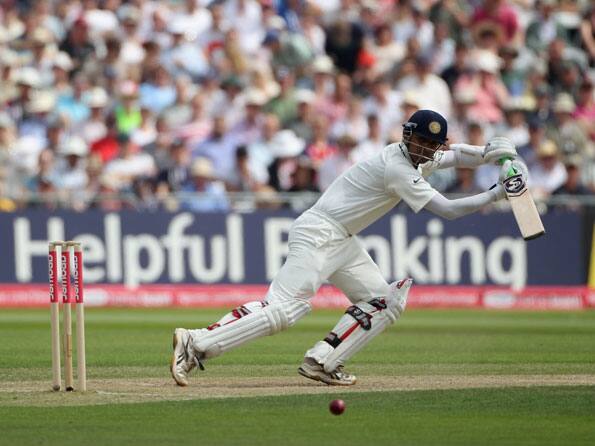
Cricket Country Staff
Editorial team of CricketCountry.
Senior batsman Rahul Dravid on Saturday struck his 34th Test century to draw level with Sunil Gavaskar and become the joint second highest century maker from India on the second day of the second Test against England.
Written by Cricket Country Staff
Published: Jul 30, 2011, 09:22 PM (IST)
Edited: Jul 30, 2011, 09:22 PM (IST)


Rahul Dravid plays a shot during second day of the Trent Bridge Test © Getty Images
Nottingham: Jul 30, 2011
Senior batsman Rahul Dravid on Saturday struck his 34th Test century to draw level with Sunil Gavaskar and become the joint second highest century maker from India on the second day of the second Test against England.
Playing his 155th Test, Dravid achieved the landmark when he paddle-swept off-spinner Graeme Swann to the fine leg boundary at Trent Bridge here.
The 38-year-old batsman, opening the batting in place of the injured Gautam Gambhir, celebrated the milestone by raising his bat to the dressing room where his team-mates and support staff applauded his feat.
Sachin Tendulkar leads the all-time list of Test century makers with 51 tons.
Thanks to his solid knock, Dravid now sits joint fifth along with West Indian great Brian Lara on the all-time list of most Test century makers.
Dravid, who signalled his arrival on the international scene with a classy 96 at Lord’s way back in 1996, had recorded his 33rd ton in the previous Test against England at the same venue last week.
Dravid, known as “The Wall”, has also got to the three-figure mark during the Indian team’s tour of the West Indies recently.
Dravid, who came into this match with 12453 runs from 154 Tests at an average of 52.76, stands second on the all-time list of highest run-getters in this form of the game behind Sachin Tendulkar.
The former India captain’s highest Test score is 270, which came against Pakistan in 2004.
© PTI
This website uses cookies so that we can provide you with the best user experience possible. Cookie information is stored in your browser and performs functions such as recognising you when you return to our website and helping our team to understand which sections of the website you find most interesting and useful.
Strictly Necessary Cookie should be enabled at all times so that we can save your preferences for cookie settings.
If you disable this cookie, we will not be able to save your preferences. This means that every time you visit this website you will need to enable or disable cookies again.
